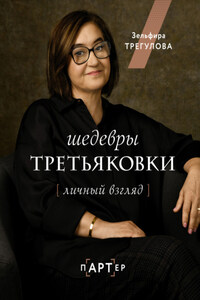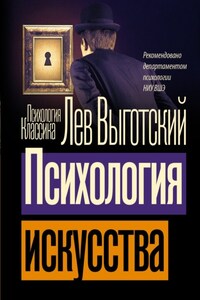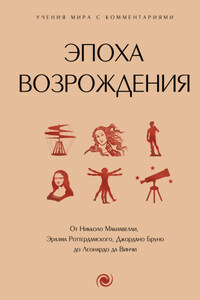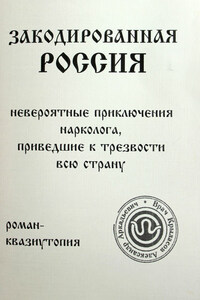© Parsktone Press International, New York, USA
© Confidential Concepts, worldwide, USA
* * *
Philipp Otto Runge, The Lesson of the Nightingale, 1804–1805.
Oil on canvas, 104.7 × 88.5 cm.
Hamburger Kunsthalle, Hamburg.
I. The Precursors of Romanticism
The Romantic Age! Youth, ardour, a generous faith in art, excessive passions; amongst fevers, exaggerations, errors, it was a period really full of ideas, personalities and works. Literary Romanticism has been subject to great arguments and violent controversy, particularly because it was considered to be responsible for divisive religious, political or social tendencies. Romantic art received less attention, perhaps because it seemed comparatively unimportant. However, it is possible to dissociate the two movements. They were linked not because of personal friendships developing by chance between a few painters and writers but because those movements, in their different ways, share in the same origin. Born from a common mindset, they had developed in the same atmosphere. There was a Romantic generation the members of which applied their minds to literature and the arts as well as to science, philosophy, politics or industry – in fact to all the forms of activity to which their minds could possibly be applied.
The canons of Romanticism were first formulated in Germany at the end of the eighteenth century. As early as 1770 and 1780 representatives of Sturm und Drang, a movement both literary and political, meaning literally ‘storm and stress’, were rebelling against the Enlightenment and its values. Friedrich von Schiller and Johann Wolfgang von Goethe were amongst the followers of Sturm und Drang, who made a religion of individualism and nature as advocated by Jean-Jacques Rousseau in the middle of the eighteenth century. However, despite that wave of protest the rejection of classical rules was only partial. Sturm und Drang turned its back on classical traditions and literary conventions but its canons of beauty were still based on Antiquity and prescribed the perfection and harmony of forms. Classicism was totally rejected as a whole by the intellectuals contributing to the journal Athenaeum, amongst whom were Wilhelm von Schelling and Novalis representing the ‘Iena Romantics’ group. In contrast with earlier values they put an emphasis on the feeling of infinity, mysticism and the expression of irrationality.
In Ireland, the Philosophical Enquiry into the Origin of our Ideas of the Sublime and the Beautiful by Edmund Burke, published in 1756, developed the Romantic vision of nature. In Burke’s remarks on painting, one notes the same tendency through “the painting of the sublime” on the one hand and the “mysticism of landscapes” on the other, clearly exemplified by the works of Caspar David Friedrich. In 1762, James McPherson’s English translation of Poems of Ossian became a reference for Romanticism. Allegedly attributed to a Scottish bard of the third century, the origins of the book are mysterious but it appealed to the collective imagination and plunged its readers into the depths of their dreams.
Thus the European literature of the eighteenth century paved the way for Romanticism, but it is in the art of the nineteenth century, particularly in France, that it reached its zenith. French art at the time formed an imposing structure whose magnificent order reflected the heroic times that had built it. A fanatical admiration for Graeco-Roman Antiquity was still defended. Art’s only goal seemed to be to revive the inspiration and methods of that blessed time, which alone had managed to bring pure, serene and ideal beauty out of humanity. But Antiquity could appear multi-faced depending on the eyes and predispositions of its admirers: by turn it could be solemn, pleasant, frivolous, noble, generous or depraved. When men imagined it tense, stiff, stilted and raised towards inaccessible peaks they projected their own genius onto it. Through Socrates, Romulus and Leonidas they glorified their own century. They praised the human figure, powerful bodies with wide chests, regular facial features, strong contours, refined drawing, vivid colours devoid of ornaments, subordinated nature reduced to the passive role of décor. Everything echoed the tendencies of generations galvanised first by their passion for freedom and then for glory. Bare and stilted statues, devoid of accentuation, appealed to eyes that could not stand the graces of the eighteenth century. Palaces, temples and commemorative monuments tried to convey the majesty of that time through plain, solid and large structures drawing on Vitruve’s repertoire. Inside the buildings, mahogany furniture followed heavy architectural patterns and decorations included chiselled noble copperware, solemn chandeliers and grandfather clocks, wall coverings adorned with large geometrical patterns in which gold, green and Etruscan red were associated, composed austere and simple harmonies designed for a new and rather unrefined society that had forgotten the gentle way of life. It was an artificial but perfectly adequate setting whose consistency was quite remarkable and particularly striking when contrasted with the disorder of the following period. The brilliance of that style, though it was soon to be tarnished, was nevertheless magnificent. At the same time that France provided politics, sciences and the army with men of genius or great talent, she also supplied the arts with an élite, a whole host of stars.








